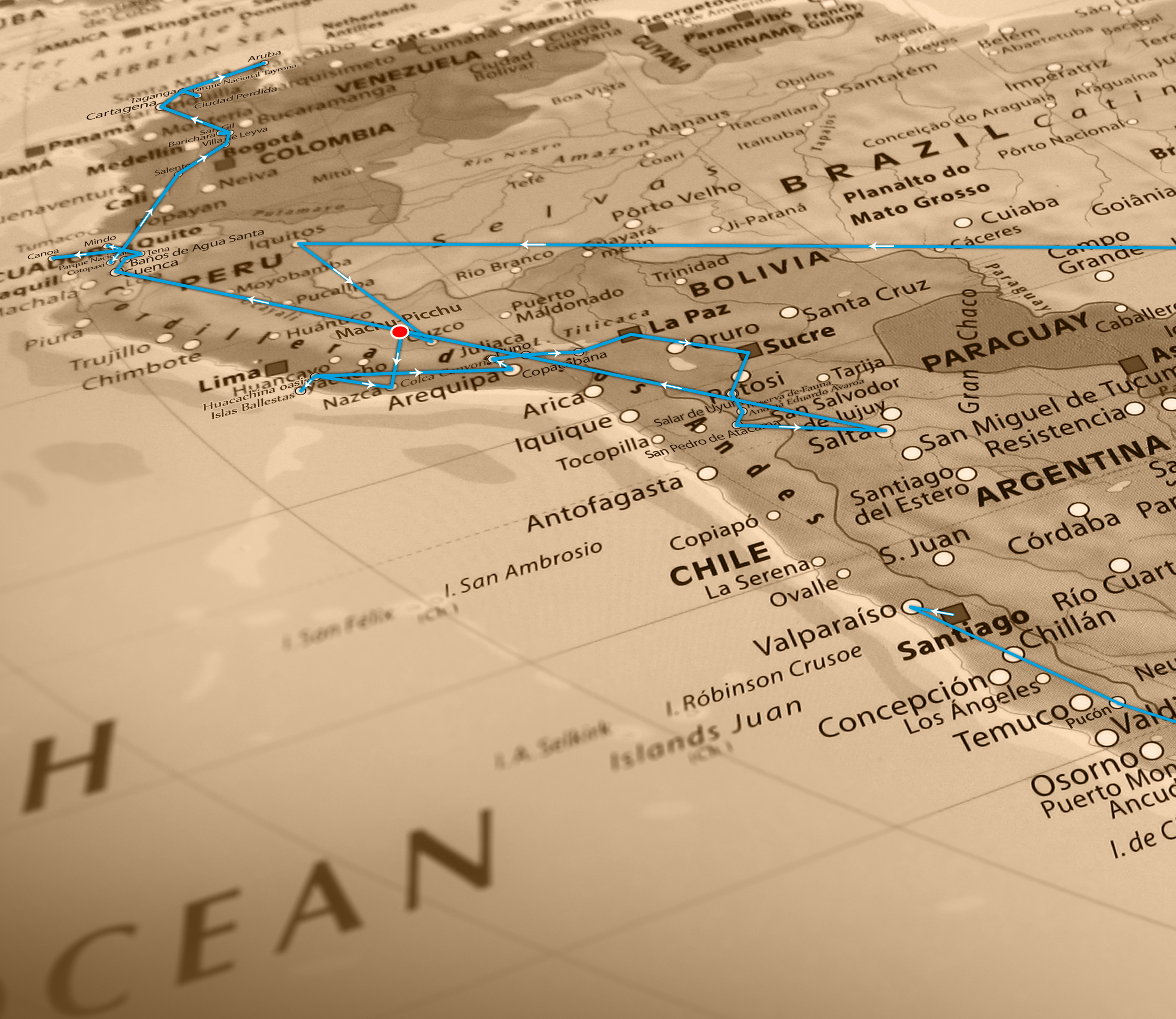
BACK
31st January – 5th February 2015 Inca Trail, Machu Picchu - Peru
-
The "Camino Inca", the Inca trail leads in the Sacred Valley of the Incas in the Andes Mountains. I did the trek right after the jungle, up to the mountains...it was a big change, but had no other choice as the Inca trail is closed for one month each year, and that month turned out to be February...so I had to catch the last trip available starting on the 31st January.
-
4 days hiking above 4000 meters, with some really hard parts, sleeping again in tents and freezing in the evenings. Luckily I was not affected by altitude sickness, which has symptoms like headache, nausea, weakness, dizziness, nosebleed and so on, but I was surely running out of air a good few times. You can chew Coca leaves to depress the effects of high altitudes...I tried it once, but neither the taste nor the idea of chewing all the time -like my super cute!! lamas :) - was my thing. Although the Coca was the sacred leaf of the Incas. It was used to communicate with the Andean deities, and it has its special role in the ancient Andean daily life. It was a symbol of cultural identity in ceremonies, and was also used as a medicine.
-
The Incas made more than 21 thousand-kilometre-long path where the messengers (the Chasqui-s) were carrying the messages. All the way along there are huge rocks set, lot of them as stairs. These stairs are so high, that I also had difficulties to step on them carrying the backpack – having long legs :) . I had no problem falling asleep each day around 8-9pm, just as I did in the rainforest; without electricity these places are very dark after sunset.
The group I was hiking with was a great mixture of cheerful and friendly people from Brazil, Argentina, Peru and Finland, and the guides were telling us interesting details about the Inca culture.
For centuries Peru was the center of the vast Inca Empire. Inca people settled down in Cuzco in the 10-11th century and by the 15th century their empire - where 12 million people were living - was spreading from today’s Ecuador all the way to central Chile, up to the present day’s Bolivian Titicaca Lake. -
The Incas’ history is unclear, not documented, that is why it feels so mysterious. There is evidence that much earlier advanced cultures already lived in this area…The Peruvians - understandably – call the Spanish conquest as "invasion", although the Incas did the same thing with the ancient cultures and people living there at that time. Our tour guides emphasized that the Incas did not invent anything, just applied the already existed knowledge. Either way, they also left a few impressive and amazing things behind in the area of architecture, metalwork, road and irrigation systems, farming, astronomy and mining.
-
Before the Spaniards set foot on the land of the indigenous people of Peru, mysterious religions were practiced. There were “temples” built to honor the Inca religion’s Sun god. Incas were the name of the monarch, who were believed to be the child of the Sun. The Incas believed in the sun god, moon goddess, the water and the Pachamama, Mother Earth. They had faith also in the three levels of life, symbolized by three animals: the condor, the puma and the snake. The condor was a sacred bird of the Incas, who represented the upper world of the Gods and the stars, and connected this world with people’s world. Condor was the messenger between the Earth and the sky. The puma represented the middle world, the human life and physical strength. The snake symbolized the lower world: the underworld, death, and at the same time represented the wisdom and health.
Some important cities in the Inca Empire we built in shape of animals: Cusco built in the form of a puma, Ollantaytambo looks like a lama from above, and the Llaqtapata archaeological site shows the shape of a snake. -
Walking along the Inca path got us to Machu Picchu (means "old peak") in the valley of the Andes, 2,430 m above sea level, in an extraordinarily beautiful setting. I guess I was spending more time gazing the surrounding mountains and valleys than the outstanding 15th century religious, ceremonial, astronomical and agricultural centre of the Inca civilization.
The place is nestled among the foothills invisible from the valley of the Urubamba River. In 1911 Machu Picchu was discovered by an American explorer led by a local kid, and since that time the sacred place had become known to the world. -
The free-roaming llamas are locals for centuries ago in this mystical place. Quickly I became a llama-lover, they are really kind animals: calm, friendly, independent, and help a lot to people.
-
On the 5th day I got happily back to Machu Picchu, this time with my Sister (who came to see and travel with me for a week) to climb Huayna Picchu, the peak behind the ruins you see in every typical photo of this place. After the days spent on the Inca trail, it was a recreation for my leg muscles to walk on flat ground again. :)

















